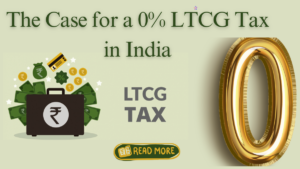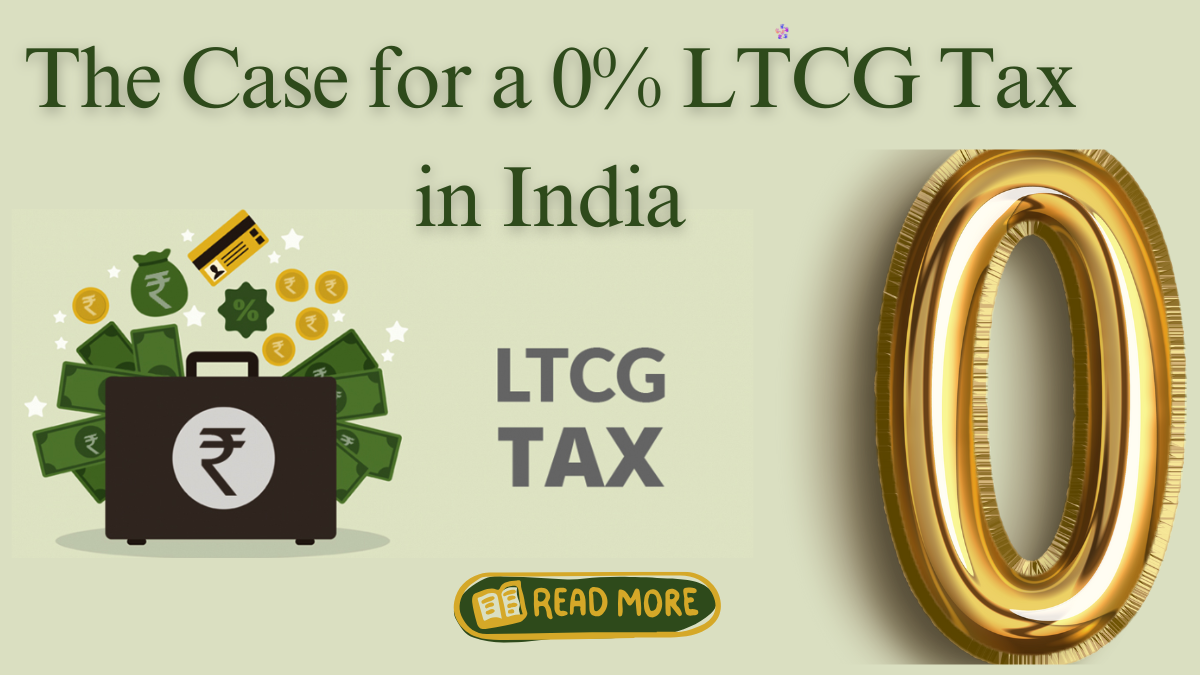In a recent discussion about tax policies, Akshat Shrivastava, a prominent finance expert, made a strong case for reducing the Long-Term Capital Gains (LTCG) tax in India to 0%. His argument focuses on the current tax burden placed on Indian taxpayers, especially in light of the country’s limited returns in terms of essential services. While countries like Sweden have relatively higher capital gains taxes, Shrivastava’s perspective emphasizes the need for change in India’s tax structure to encourage investment and economic growth.

The Case for 0% LTCG Tax in India
Shrivastava’s criticism of India’s capital gains tax system revolves around the disparity between the high taxes levied on capital gains and the minimal services provided in return. According to him, the current LTCG tax, which stands at 10% (for gains exceeding ₹1 lakh), is discouraging long-term investments and hurting economic growth.
Key Points from Akshat Shrivastava’s Argument
- High Tax Burden for Limited Services: In India, taxpayers are paying significant taxes, but in return, they are receiving little in terms of quality public services like healthcare, infrastructure, and education.
- Comparison with Sweden: Shrivastava points to Sweden, where the capital gains tax is 30%, but the citizens enjoy high-quality government services such as free healthcare, subsidized education, and well-developed infrastructure. He argues that if India intends to levy high taxes, the government should focus on providing essential services of a similar standard.
- Encouraging Investment and Economic Growth: Lowering the LTCG tax to 0% would incentivize more individuals to invest in the market, which would, in turn, stimulate economic growth and lead to the creation of more jobs. With India’s economy rapidly evolving, such a policy could benefit both investors and the country’s financial landscape.
| Aspect | India | Sweden |
|---|---|---|
| LTCG Tax Rate | 10% for gains over ₹1 lakh | 30% |
| Public Services | Limited access to healthcare, education, and infrastructure | High-quality public services (free healthcare, education) |
| Economic Growth Focus | Moderate growth with tax burden | High growth driven by investments |
| Taxpayer Burden | High, with limited returns | High, with substantial returns |
What Does a 0% LTCG Tax Mean for Investors?
If India were to implement a 0% LTCG tax, it would lead to several benefits for the economy and investors:
- Increased Investment in Stock Market: Investors would be more motivated to hold their investments for the long term without worrying about taxes eroding their returns.
- Boost in Startup Funding: Entrepreneurs would be able to raise capital from investors without the fear of high taxes on the returns from their investments.
- Attracting Foreign Investments: A 0% LTCG tax would also attract foreign investors, contributing to the growth of India’s financial markets and increasing global confidence in its economy.
Potential Challenges to Implementing 0% LTCG Tax
While Shrivastava’s argument is compelling, implementing a 0% LTCG tax in India could face several challenges:
- Revenue Loss: The government may experience a decline in tax revenue, which could affect public spending and essential services.
- Wealth Inequality: Reducing taxes on capital gains could exacerbate wealth inequality, benefiting primarily the rich, who hold a majority of long-term investments.
- Policy Transition: Transitioning to a 0% LTCG tax could be politically challenging, as it would require significant shifts in the current tax policy and tax collection mechanisms.
Conclusion
Akshat Shrivastava’s call for a 0% LTCG tax in India reflects a growing concern over the tax system and its impact on economic growth. While countries like Sweden have higher capital gains taxes but provide ample public services in return, Shrivastava believes that India should lower taxes to foster long-term investments. However, the implementation of such a policy would require careful consideration of its economic and social impacts, balancing the need for growth with the provision of essential public services.
People May Ask
Q1: What is the current LTCG tax rate in India?
A1: In India, the LTCG tax rate is 10% for gains above ₹1 lakh.
Q2: Why does Akshat Shrivastava want a 0% LTCG tax in India?
A2: Shrivastava advocates for a 0% LTCG tax to encourage investment, improve economic growth, and address the issue of taxpayers receiving limited public services in return for their taxes.
Q3: What are the benefits of reducing LTCG tax to 0%?
A3: It would increase long-term investments, support startup funding, and attract foreign investments, contributing to the overall economic growth of India.
Q4: What challenges could India face if it implements a 0% LTCG tax?
A4: Potential challenges include a loss in tax revenue, increasing wealth inequality, and the difficulty of policy transition.
Q5: How does the LTCG tax rate in Sweden compare to India?
A5: Sweden has a higher LTCG tax rate of 30%, but it provides extensive public services in return, unlike India.
Pari is a passionate writer known for captivating stories that blend imagination and reality. Inspired by travel, history, and everyday moments, Pari crafts narratives that resonate deeply with readers.
